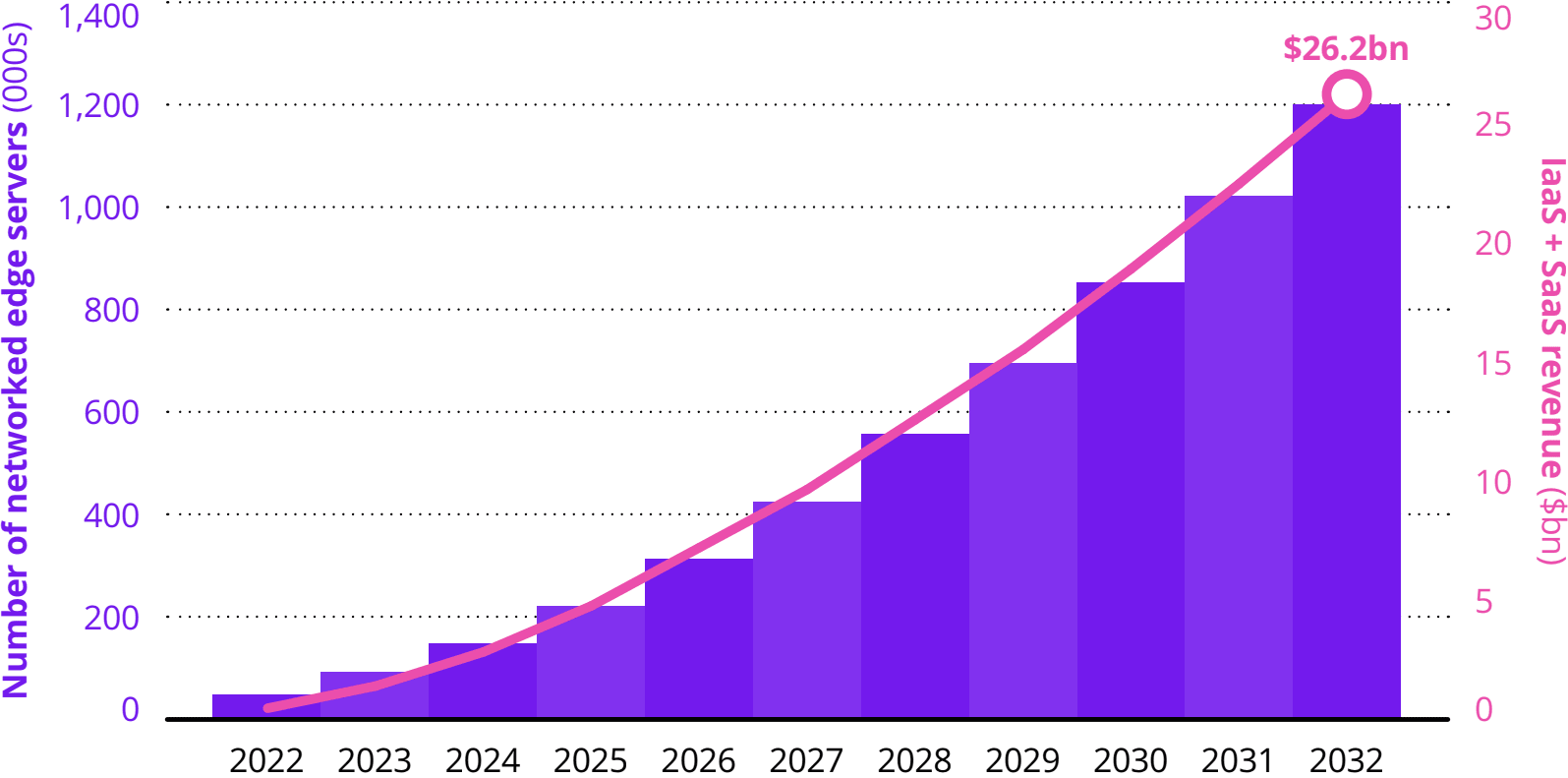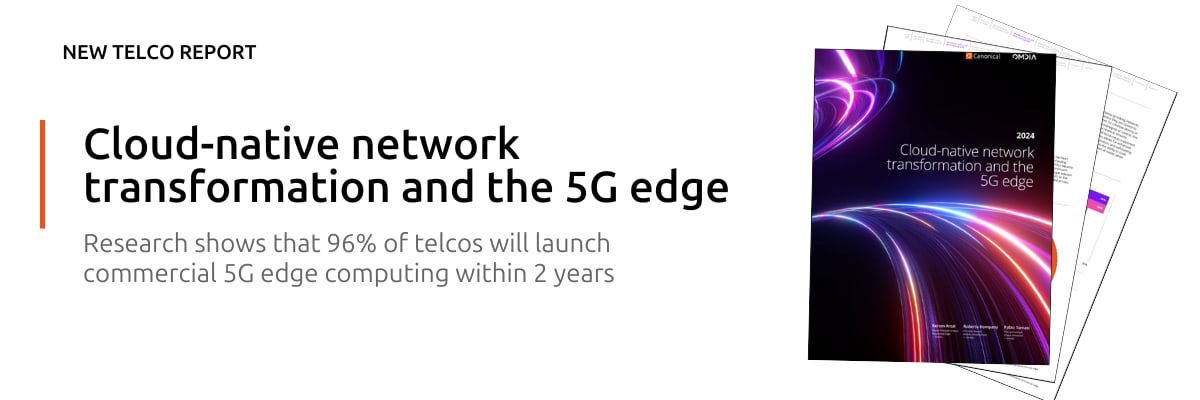Canonical
on 12 September 2024
New research predicts networked edge computing will present a $26bn opportunity by 2032
Report by Omdia and Canonical finds network cloudification a key priority, shows CSPs embracing open source technologies
London, UK. 12 September 2024. Today, Omdia and Canonical, the publisher of Ubuntu, released a new research report which indicates that communications service providers (CSPs) in the US, UK and Germany increasingly view networked edge computing not just as a long-term priority, but as an opportunity that will generate returns in the near future. The report, entitled “Cloud-native network transformation and the 5G edge”, finds that realising the full potential of 5G networks is a priority that CSPs are tackling with increased optimism.
After a slow start, CSPs see potential in 5G networked edge computing
Until a few years ago, concerns about the absence of a “killer app” to drive the growth of 5G networked edge computing fueled uncertainty among CSPs about use cases and demand. The research report shows, however, that this situation has changed dramatically, driven partly by the growth of interest in AI-powered use cases. In fact, 86% of CSPs are optimistic about the future of edge computing on telco networks.
This optimism is driving action: CSPs are now ramping up their efforts to become cloud-native in order to adopt a streamlined, mature approach to networked edge computing. The research reports that 90% of CSPs who don’t already have a full commercial edge computing deployments in place, plan to complete it within the next two years.

CSPs’ expected timeframe for completing commercial deployment of edge computing
Cloud-native technologies essential for unlocking $26bn networked edge opportunity
Almost all respondents reported expecting some (60%) or substantial (39%) new revenue to come from edge computing in future. It’s easy to see why: when computing comes closer to end users and devices, and is integrated with network functions, workloads can be optimised for low latency and bandwidth savings while applications can run near or within customer premises to satisfy privacy, control and performance requirements.
All the optimism, confidence in demand, and growth expectations, along with expansion plans of edge infrastructures will translate to an overall market growth. Omdia expects networked edge uptake to grow over the next several years, leading to an opportunity of more than $26bn of IaaS and SaaS by 2032.

Networked edge servers (installed base) and related IaaS + SaaS revenue, 2022-2032
CSPs recognise, however, that network cloudification will be essential for capturing the edge computing opportunity. The survey found that network cloudification across all network domains, core, RAN, and transport, is the biggest expected driver of edge computing for telcos.
Kerem Arsal, Senior Principal Analyst at Omdia elaborates, “Our research shows that networked edge computing will grow and mature significantly over the next several years,” and added that “CSPs recognise that network cloudification will be key in capturing edge computing opportunities. They see becoming cloud native as a big priority due to its many benefits – both from technical and operational perspectives.”
Technical issues, interoperability and network readiness among key pain points for CSPs
Undoubtedly, CSPs are still facing challenges in making the benefits of edge computing a reality. The research sought to explore the nuances of these challenges. The majority of CSPs identified technical issues, such as clashes between cloud and legacy systems, as the primary barriers to deploying edge applications. Network readiness for edge computing, specifically lack of progress on vRAN, 5G core and containerisation, was also highlighted as a key hurdle. Enhancing interoperability through network cloudification was identified as a priority for overcoming these challenges.
Cloud-native technologies can be instrumental in addressing many of these challenges. Cédric Gégout, VP of Product at Canonical, explains: “Becoming cloud-native goes beyond networked edge computing. It’s about using platforms like Kubernetes, LXD, and OpenStack to unify diverse systems. Combined with the interoperability offered by open source components, like Ceph for distributed storage and OVN for software defined networking, this helps automate and orchestrate everything from deployment and maintenance to continuous optimisation. By adopting cloud-native technologies, CSPs can make their networks more flexible, enabling faster deployment of new services like AI-driven management and real-time analytics. This approach not only boosts efficiency but also keeps CSPs competitive, ready to capitalise on the new coming opportunities in network edge computing.”
It’s essential that CSPs view becoming cloud-native as more than a way to reap the benefits of networked edge computing. It should be approached as a solid strategic move that will also result in a better experience for existing customers, one that can open up new revenue streams, and overcome persistent hurdles.
Read the report for a full overview of the benefits and challenges that are driving networked edge computing.




